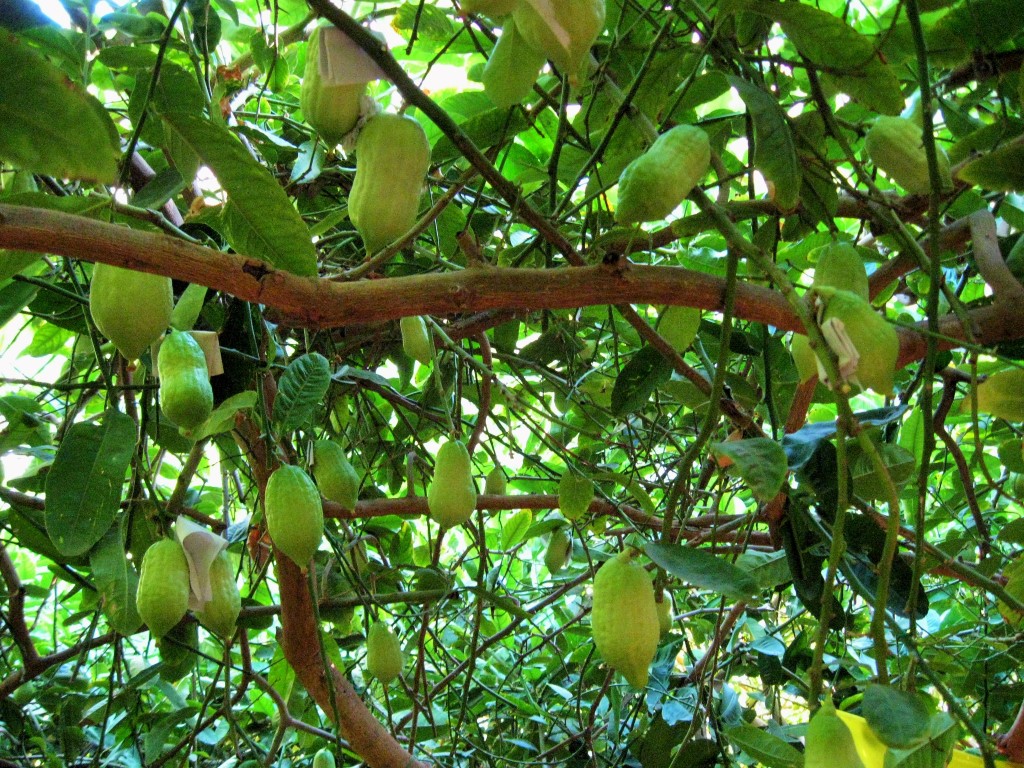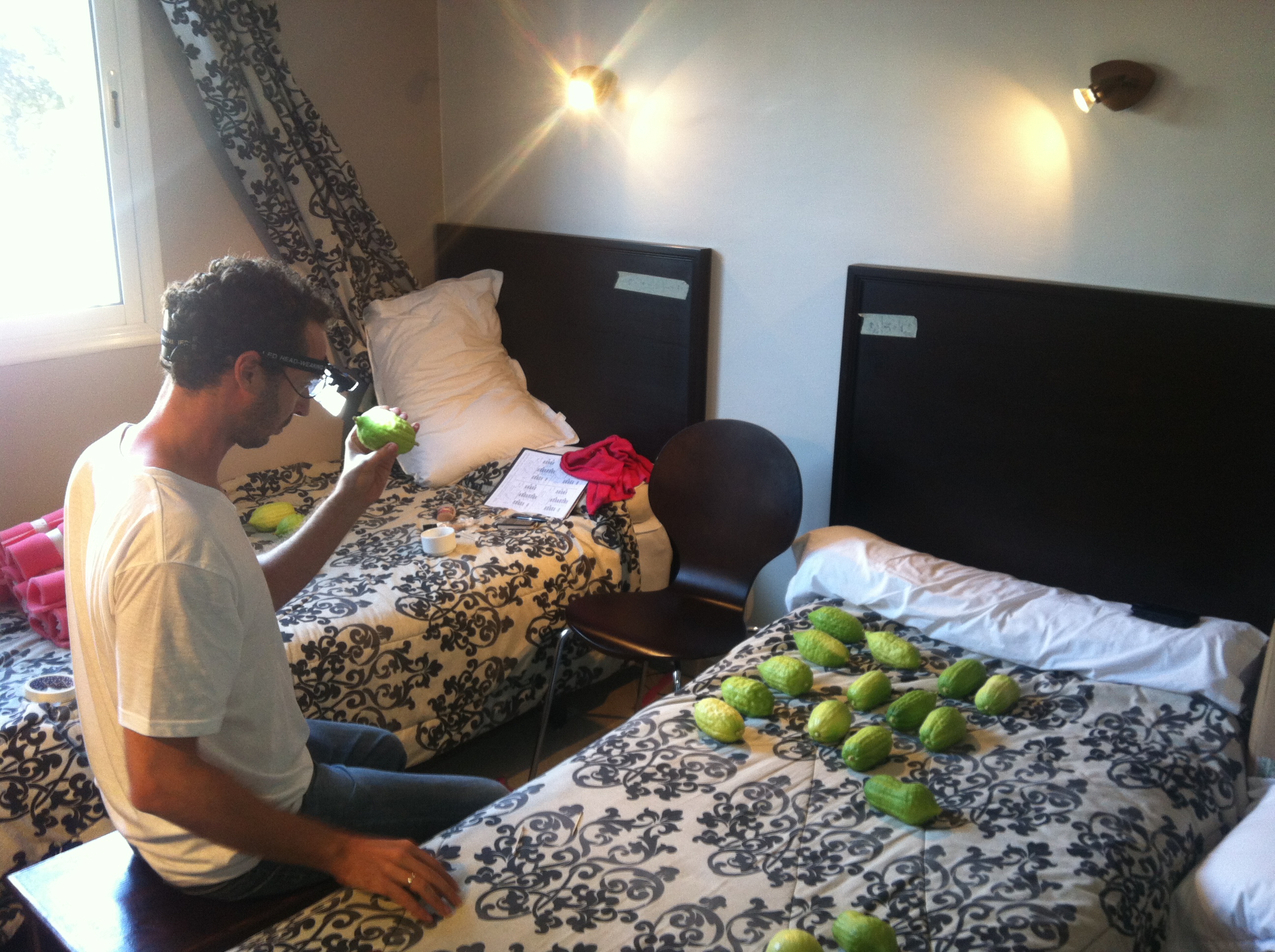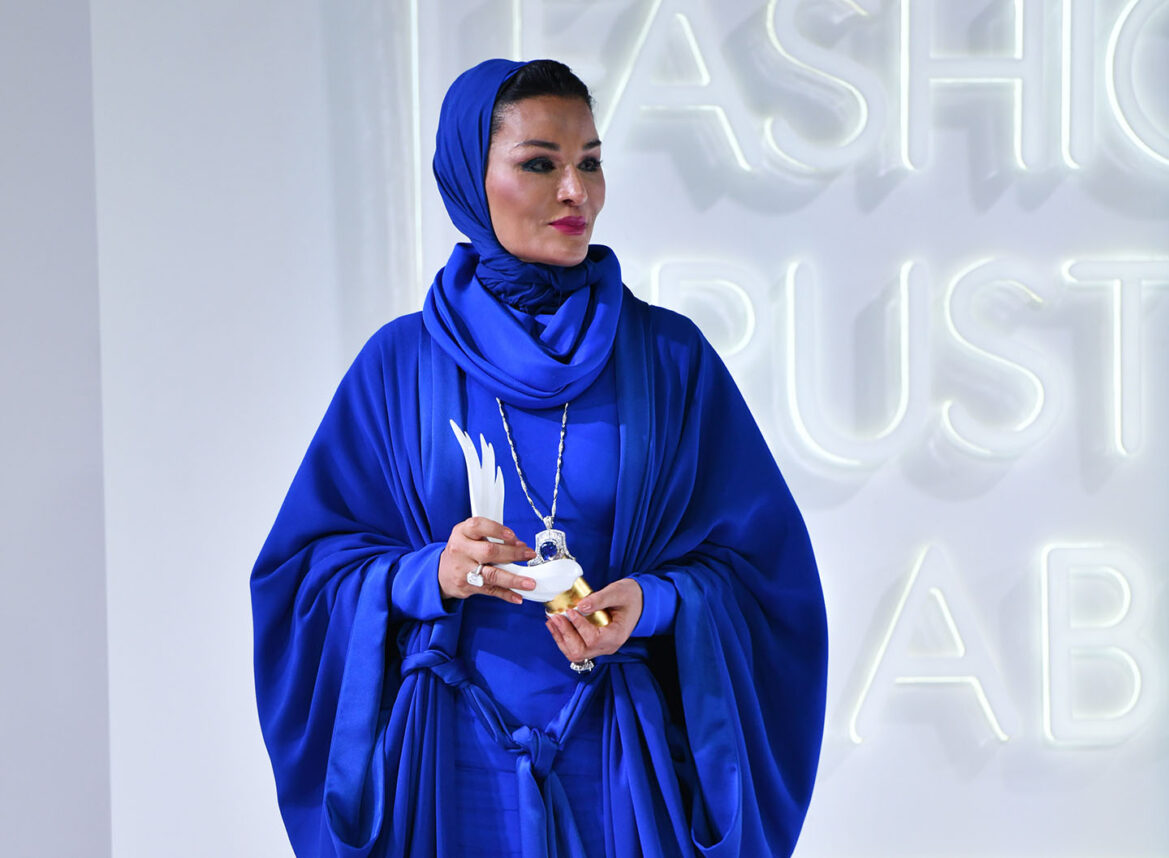 Photo by Deborah Danan
Photo by Deborah Danan It wasn’t exactly the pampering honeymoon I’d had in mind. With no electricity, no running water and no bathroom to speak of, this was about as rough as it gets. The view, however, more than made up for the lack of luxury. Our accommodations, a two-room mud hut, were nestled in the Dumdir wadi between two mountains in the Anti-Atlas range in southern Morocco.
There is plenty of greenery in the valley, where the land is more fertile and an aqueduct cuts a path between the mountain on one side and a 700-foot drop on the other. The Anti-Atlas mountain range is a sprawling terrain stretching some 300 miles from the Atlantic Ocean to the Sahara Desert.
Two very valuable trees are indigenous to this area. One is the argan tree, whose seeds are the source of argan oil used for cooking and, increasingly in the West, for cosmetics. The second is the citrus medica, or as it is more commonly known by Jews around the world, the etrog. My husband, Tsvi Dahan, deals in the latter. It has been his passion — and in good years, a source of livelihood — for the past two decades.
The story of the etrog is thousands of years old and almost as fascinating as the Bible itself. It is a tale replete with rabbinical disputes, historical debates and no small measure of scandal. Capturing the passions of many men throughout the ages, it is small wonder that the Talmud likens the etrog to the human heart. Many Jews hold the belief that the etrog was also the forbidden fruit that led to Adam and Eve’s expulsion from the Garden of Eden.
The story of the Moroccan etrog harks back to the first century C.E., when Jews first settled among the Berbers in North Africa after being exiled from the Holy Land following the destruction of the Second Temple, right through to present-day Brooklyn, N.Y., amongst Satmar Chasidim, who continue to wear the modest clothing and black garb of their 18th-century Eastern European ancestors.
It is the day before Yom Kippur, 2017. Tsvi occupies a tiny storefront on Lee Avenue in the Williamsburg neighborhood of Brooklyn. With jeans and a knitted kippah, he is clearly an outsider and will not make many sales. Still, quality trumps quantity in the Moroccan etrog industry, and Tsvi’s merchandise is nonpareil, allowing him to demand upward of $50 per fruit. A man enters. He examines the wares, gingerly picking them up one by one. He selects a yellowish, slightly corrugated etrog for closer scrutiny, using a magnifying glass and a lamp.
“It is totally clean,” Tsvi tells him proudly.
The man’s sidelocks sway as he nods his head in agreement.
“And look at the shape. Completely symmetrical and with a gartl,” Tsvi says, referencing the belt worn by Chasidic men.

Satmars covet an etrog with a slim waist that dips inward, resembling a Coca-Cola bottle. They also insist on it having as few marks as possible.
Blemish-free is the holy grail of etrogs, but achieving it is more the realm of a horticulturist than an etrog farmer. For Tsvi, it’s mostly a matter of trial and error. One year he’ll spray his trees with extra pesticide to deter insects, while another year he might try growing the etrogs in gauze bags to prevent dents from rogue branches.
Apart from ritual use by Jews as part of the four species on Sukkot, the etrog’s other main use is in perfumes, and for that they don’t need to look pretty.
Tsvi’s grandfather from Marrakesh learned the etrog trade from his mother and uncle. He then bequeathed his knowledge to his six sons. In 1998, Tsvi and his twin brother, Gadi, were employed by their uncles to help with the harvest in Morocco during Elul. That was also the year I met Tsvi. I was 16 and Tsvi was the soldier and medic accompanying my summer camp in Israel. It would be another 14 years before fate would cross our paths again and we would fall in love and marry.
The following Elul, the twins decided to go it alone. In the years that followed, they would fail, many times, and lose a lot of money in the process.
In 2007, Tsvi wrapped up a master’s degree and quit his job at a bank to go and spend time in Dumdir. For two months, he lived on the mountain with minimal contact with the outside world, learning the etrog trade from the ground up. He kept scrupulous notes in a journal.
“I immediately felt connected to a past that is very rich,” he said. “When I was in yeshiva, I studied the Talmud tractate Sukkah and [in Morocco], in this place that is so far from everything, I got to encounter what I’d learned firsthand. It was amazing.”
During his time on the mountain, Tsvi met Bila’id, a local Arab from whom he leases a field. For 10 years, Bila’id has been Tsvi’s full-time employee for the year-round cultivation of the etrogs.
Bila’id is a Shleuh, part of the Berber subgroup that dwells on the mountain and has been growing etrogs for Jews for centuries. In 1995, the late Rabbi Yosef Shalom Eliashiv, considered a Torah giant of the last generation, sent a delegation of rabbis and experts to the Anti-Atlas canyon to verify the kashrut levels of the etrogs. The findings, which included a total absence of grafted trees, led Rabbi Eliashiv to conclude that the lineage of the Moroccan etrog had remained unbroken for close to 2,000 years, making it unique in the world.
“Capturing the passions of many men throughout the ages, it is small wonder that the Talmud likens the etrog to the human heart.”
During our honeymoon, in April, 2016, we spent a great deal of time with Bila’id and his sons. Our voyage to the mountain took us by car through Assads, the main village in the area, and then up serpentine mountain roads to Tamgersift. From there, we were forced to park and ascend the mountain by foot. The path was treacherous, only a foot wide at parts, with a steep precipice to the left. We trekked for an hour before reaching Tsvi’s field, but thankfully it was mostly in the shade — no small mercy since temperatures can reach as high as 127 degrees.
My backpack grew heavier with every step but I refrained from complaining. The people I was with are tasked with carrying a few thousand etrogs down the same way to be inspected and sorted by Tsvi into categories ranging from 6 to 1 — with 1 being the most exquisite etrogs — before being shipped to New York, Los Angeles and Israel. In the hut, Bila’id served me Moroccan tea with generous helpings of sugar.
At the top of the mountain, there is a plateau with five hamlets. Once upon a time, two of the hamlets were exclusively Jewish while two others were Muslim. The fifth, Tignidin, is where Bila’id grew up, and it once had a mixed Jewish and Muslim population. Some of the Jews converted to Islam, but most left for larger cities like Casablanca in the 1930s and ’40s.
The Jews of Tignidin owned the land in the Dumdir wadi and when they left, they gave the fields to the Arabs, Bila’id said. In return for looking after them year-round, the Jews promised the Arabs a permanent livelihood by coming back every year before Sukkot to purchase etrogs.

Bila’id has been growing etrogs for the past 30 years. “When I see a beautiful etrog, it makes me happy,” he said. Asked what he thought of the Jews and their strange commandments, he said, “The etrog is a symbol of goodness. This is how you serve God. You believe that if you have a beautiful etrog, your whole year will be beautiful. We try to stop the etrog from getting diseases, or becoming damaged by a thorn or a flying creature.”
Such notions, while sweet, are largely fanciful and have no real source, Tsvi said, adding that during the times of the Temple, the lulav, palm branch and etrog were used to pray for that year’s rainfall, which in turn represents livelihood. On a personal level, he continued harvesting and selling etrogs, despite its many pitfalls, as his way of serving his Maker.
“In [a] regular job, [you] have a salary and that’s it,” Tsvi said. “But when it comes to growing [the etrogs], I am reminded constantly that everything is from Him. I can invest hundreds of thousands of shekels and have it all disappear in a flash when a drought causes the fruit to drop from the trees prematurely. I am completely at God’s mercy.”























 More news and opinions than at a Shabbat dinner, right in your inbox.
More news and opinions than at a Shabbat dinner, right in your inbox.